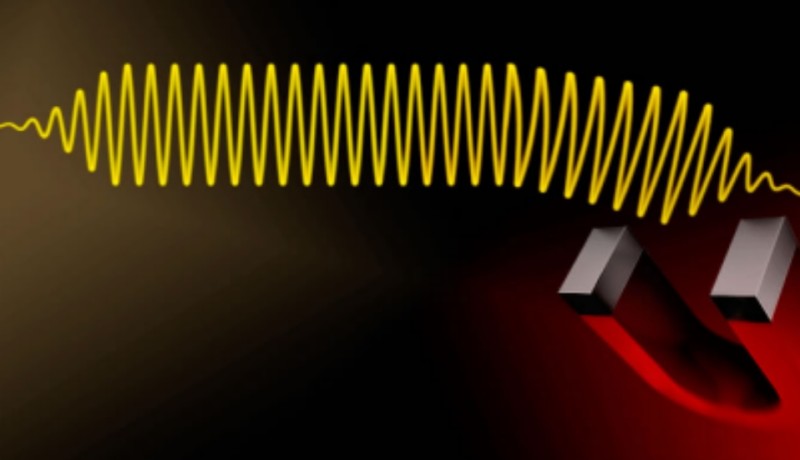Artificial magnetic fields for photons
on

In modern information technology there is a clear task separation between the light particles (photons) that are used to carry data quickly and reliably across large distances, and the electrons, which in computer chips take care of the data processing. That we don't use photons for data processing is (among other things) because they are not as easily controlled as electrons. Because photons don't have an electric charge they cannot be controlled using electric or magnetic fields. However, researchers from the ETH (Eidgenössische Techische Hochschule) in Zürich have experimentally demonstrated how artificial magnetic fields can be generated that (indirectly) can be used to control photos.
Although it is impossible to give photons an actual electric charge, it is nevertheless possible, in a sense, to deceive them into having one. For example, for a couple of years researchers have been working with materials with optical properties that have been adjusted during manufacture so that photons move through it as if they were 'sensing' an electric or magnetic field. The disadvantage of this technique is however that these 'artificial fields' cannot be changed, or on any case, not changed very quickly. But this is exactly what would be required in order to use photons for data processing.
The approach taken by the ETH researchers does not rely on the material properties, but on the use of so-called polaritons. When photons enter a material, the electrons of which allow themselves to be moved by the light waves or 'polarize' (we are considering dielectric materials), they form polaritons – coupled light and polarization waves (or excitons, mutually bound electrons and 'holes').
The photons are therefore changed into polaritons which drag excitons with them when they move through a semiconductor. Through this combination it becomes possible to (indirectly) influence the photons by subjecting the semiconductor material to electric and magnetic fields.


Discussion (1 comment)